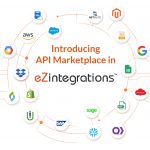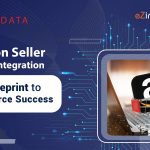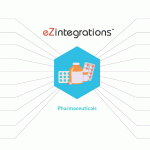Introduction
One of the most challenging tasks when working with APIs is integrating multiple APIs into a single system. This process is known as ‘API integration’. When done correctly, API integration can offer many benefits, such as increased efficiency, better data quality, and improved customer experience.
In the current digital age, APIs have become an essential part of any company’s IT infrastructure. An API (Application Programming Interface) is a set of rules and protocols that allows two or more applications to communicate with each other.
However, API integration can also be a complicated and time-consuming process. In this article, we will provide you with a step-by-step guide on how to successfully integrate multiple APIs.
What is an API?
An API is a bridge between two or more applications. It is a set of rules and protocols that enable applications to communicate with one another. APIs allow applications to share data and information, such as purchase orders, user profiles, account information, and more. APIs can also be used to add new functionalities and features to an application. In addition, APIs are used to allow different software systems to interact with each other and to enable the different systems to share a common set of data. For example, a hotel booking application might use an API to be able to coordinate with the hotel’s reservation system.
What are some common API types?
There are four main types of APIs: web service APIs, library APIs, operating system APIs, and third-party APIs. Web service APIs are used to provide services over the internet. These APIs often leverage client-server architectures to provide users with data and services. Library APIs are used to access and manipulate software libraries. These APIs are mainly used by software developers to add additional features to their applications. Operating system APIs are used to access and manage operating system features and functionalities. These APIs are mainly used by system administrators and software engineers. Third-party APIs are those developed by independent third-party developers and are available for use by any company or individual. These APIs are usually focused on providing access to a specific set of data or services.
How do you know which APIs to use?
In order to choose the right API for your project, there are a few key things you should consider. Firstly, it is important to consider the availability of the API. If the API is not available when needed, there’s no point in integrating it into your project. Secondly, you should make sure to check the API’s compatibility with your project. Different APIs can have different levels of compatibility with your project, so you should make sure to research each API to see if it is suitable for your project. Finally, it is important to make sure that the API supports the features and functionalities you require. Different APIs have different features and capabilities, so it is important to make sure that the API you use has all the features and functionalities you need.
How do you integrate multiple APIs?
Integrating multiple APIs can seem daunting at first, but it doesn’t have to be. The key to successful API integration is to be organized, methodical, and prepared. The first step in API integration is to build a plan of action. This plan should include a list of all the APIs you wish to integrate, the tasks that need to be completed, and the timeline for completion. Once you have your plan, you can start to move forward with the work. The next step is to start integrating the APIs one at a time. This process involves identifying the data that needs to be shared between each API and mapping out how it should be shared. Once you have established a data exchange between the APIs, you can move on to the next API. Repeat this process until all the APIs have been integrated into the system. Once you have integrated all the APIs, you can test and verify that the integration was successful.
iPaaS for API integration
Some of the key benefits of using iPaaS for API integration include:
- Easy integration: iPaaS provides a centralized platform for API integration, which makes it easier for companies to connect different systems and applications and share data and functionality.
- Automated processes: iPaaS provides tools and services that can automate many of the manual processes involved in API integration, such as mapping data fields and handling errors. This can help improve efficiency and reduce the risk of errors.
- Scalable solutions: iPaaS provides a scalable platform for API integration, which can support the growth and expansion of companies as they connect more systems and applications and share more data.
- Improved security: iPaaS provides a secure environment for API integration, with features such as encryption, authentication, and authorization, to help protect sensitive data and ensure that only authorized systems and applications have access to the data.
- Flexible deployment: iPaaS can be deployed in a variety of ways, including on-premise, in the cloud, or as a hybrid solution, making it flexible and adaptable to different integration needs.
In conclusion, iPaaS is a powerful tool for companies that need to integrate APIs and different systems and applications. With iPaaS, companies can simplify and automate the process of API integration, improve efficiency and security, and scale their integration solutions as their needs change.
Tips for a successful API integration
When it comes to API integration, there are several tips you can follow to ensure a successful integration. Firstly, it is important to make sure you have a comprehensive integration plan in place. This plan should include a list of the APIs being integrated, the timeline for completion, and the tasks that need to be completed. Secondly, make sure that you are familiar with the APIs you are integrating. Knowing the capabilities and features of each API will make the integration process easier and more efficient. Thirdly, make sure that you are following the best practices for API design. This includes making sure that the API is well-documented and that it has a consistent design across all components. Finally, be sure to test and verify the API integration before you make it live. This will allow you to ensure that the API integration is working as expected.
Conclusion
Integrating multiple APIs can be a complicated and time-consuming process. However, by following the best practices and taking your time, API integration can be a successful process. In this article, we have provided a step-by-step guide on how to successfully integrate multiple APIs. We have also discussed the different API types, how to select the right API, and tips for successful API integration. Following these tips can make your API integration process smoother, faster, and more successful.






